“Super Clone Cultural Property”
The Nagano Prefectural Art Museum is holding an exhibition commemorating the completion of the museum, “Connecting to the Future – The World’s Treasures Revived at the New Museum, Super Clone Cultural Property Exhibition by Tokyo University of the Arts “.
It was possible to take pictures at the venue, so I will post some pictures.
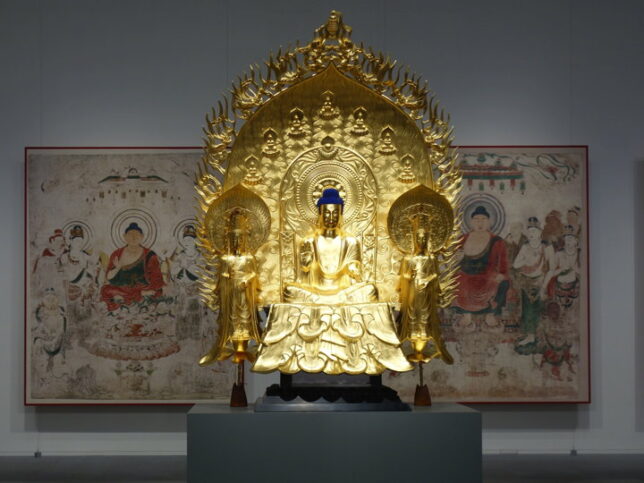
“Super clone cultural property" is reproductions of cultural properties produced by Tokyo University of the Arts.
The best way to protect deteriorating cultural assets is to keep them private and preserve them, but this would mean that their value would not be shared and their significance would be lost.
The idea of the Tokyo University of the Arts is to contribute to the maintenance and development of culture by making elaborate reproductions of cultural properties that cannot be easily opened to the public or moved, and making them available to the public around the world.
Using current digital technology, they are trying to faithfully reproduce the materials, surface irregularities, and even the touch of the brush.
Furthermore, by restoring lost cultural assets and bringing them back to life, they hope to pass them on to future generations and contribute to the sharing of culture and world peace.
The first photo is a reproduction of the Shaka Sanzon statue (statue of Shakyamuni flanked by two attendants) of Horyuji-temple in the center. And the mural painting of the ”Kondo" of Horyuji in the back.
The Shaka Sanzon statue is shining golden because it was restored to its original state. (On the second floor, a reproduction of the current situation is also on display.)
Restoration of the Shakyamuni statue was started in 2014, and it was produced by the following procedure.
(1) 3D measurement: Project a striped pattern with a projector and shoot it to create 3D data.
(2) Data analysis / modeling: 3D restoration with digital data based on the measured data.
(3) 3D modeling output: The edited data is output by a 3D printer.
(4) Casting: Casting with copper alloy based on the original shape. Takaoka City cooperated in the casting of the Shakyamuni statue, and Nanto City cooperated in the pedestal.
(5) Surface finish: Finish the surface by scraping, and filing.
(6) Coloring / old color finish: Reproduces old colors over time by plating, sulfurization coloring, patina coloring, etc.
When we go upstairs, we can see the 3D output image of the stage (3). The following picture is it.
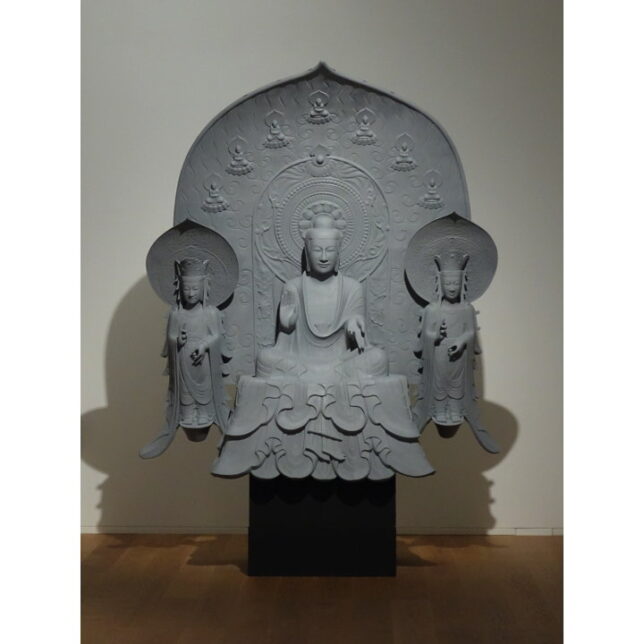
Based on this 3D output shape, make an outer mold with silicone rubber. Then, pour wax into the rubber mold to make a thick wax mold for the statue. When the wax mold is dipped in refractory slurry many times and dried, it becomes an outer mold.
Next, the wax is heated and melted, a wax-shaped space is created.
And the molten copper alloy is poured into it, the metal forms a wax shape and cools and hardens. This is called lost wax casting.
However, it seems that hallo of the Buddha statue was made in a different way. (A method called gas casting method.)
In the next exhibition room, Shaka Sanzon statue, which reproduced the current situation, has been exhibited.
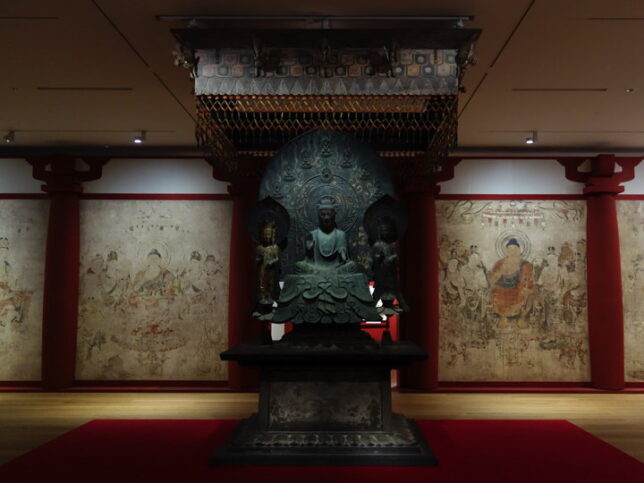
A video recording the casting scene is shown at the corner, so please watch it at the venue.
From the next room, reproductions of overseas cultural properties are on display.
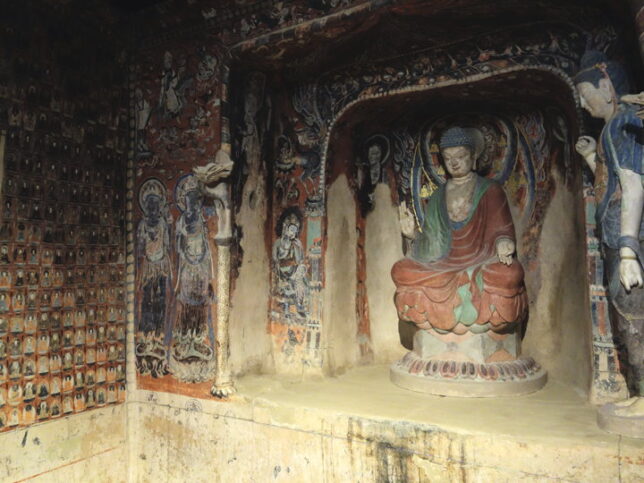
The photo is a reproduction of Dunhuang Mogao Caves, 57th Cave. Currently, the Mogao Caves are restricted to visitors in some caves for fear of deterioration by tourists, and the 57th caves is not open to the public.
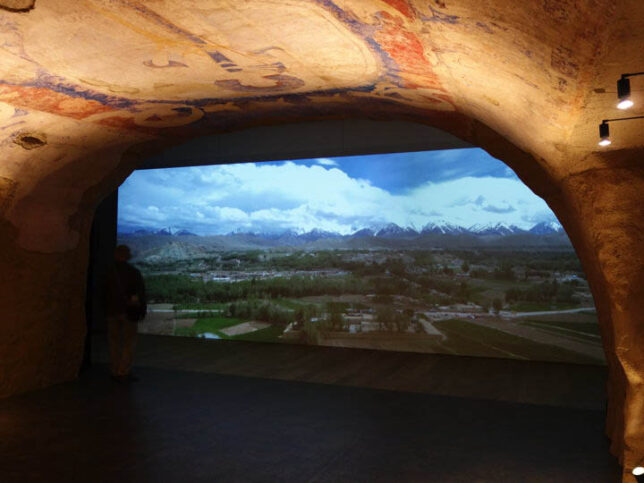
This is a reproduction of the Bamyan ruins in Afghanistan. The video shows the scenery of Afghanistan, and the reproduction is a mural painting on the ceiling. This is the mural “Sun god to fly in the sky" that decorated the canopy of Bamiyan East Great Buddha. This mural was lost when the Great Buddha of Bamyan was blown up in 2001.
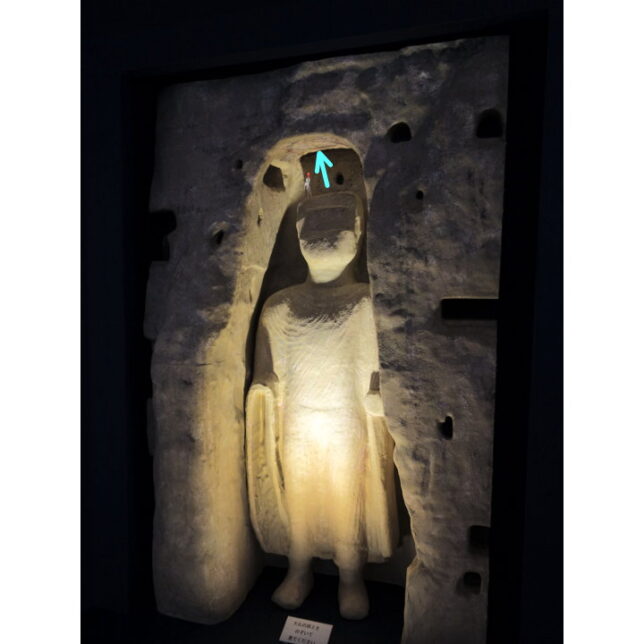
A reduced model of the Great Buddha is also on display, and it is the mural at the arrow above. (I added the light blue arrow. There was a message on the model saying “Look into above the head of the Great Buddha," but that explanation is difficult to understand.)
The picture I took is hard to understand too, but this is the mural on the ceiling.
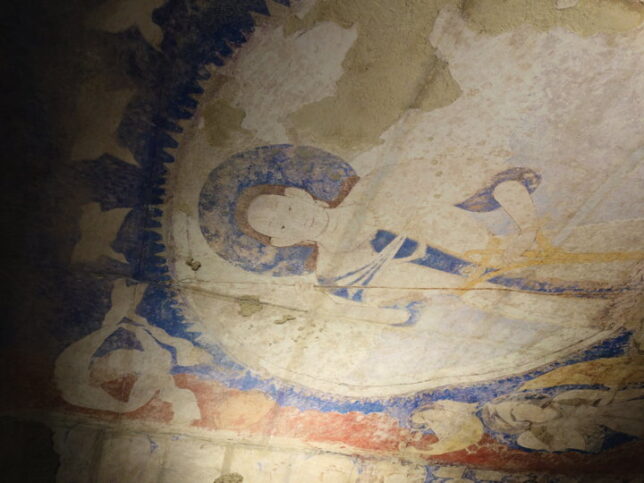
This sun god is said to be the Zoroastrian sun god Mithra. And on both sides are the Greek war god Athena and the goddess of victory Nike. Although it was a cultural property that fused various cultures, it was lost. It is very disappointing.
In addition, the mural paintings of Jiangxi Grand Tomb in the Democratic People s Republic of Korea, Kizil Caves in Xinjiang Uygur Autonomous Region, Panjakent Ruins in Tajikistan, and Samarkand in Uzbekistan are reproduced, so please enjoy the atmosphere.
The session is until June 6, 2021 (Sun).
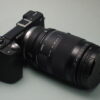
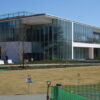
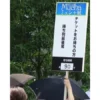
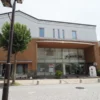

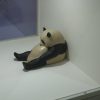
Recent Comments